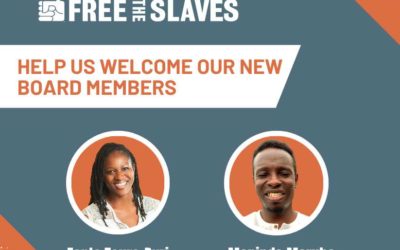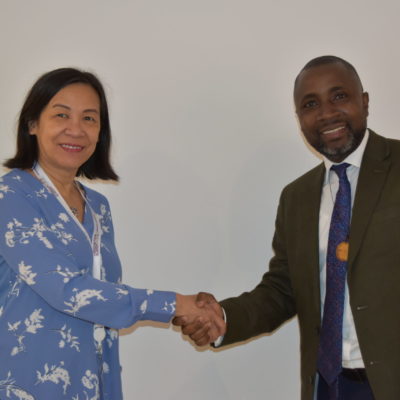Free the Slaves board member Jane Covey is featured in an interview on the Huffington Post! The interview was conducted by Jennifer Hamady, a New York city-based creativity coach. Hamady’s specialty is creativity and art—and she brings this perspective to her conversation with Covey. Here are some highlights:
When asked how she became involved with Free the Slaves, Covey says: “A friend invited me to think about it. He’d been consulting with the organization and said he thought the board could use someone like me and the work I’d done, particularly given my international work. I had never heard of the organization, much less slavery in that particular frame. I had some meetings and was very impressed. Free the Slaves exits to end slavery worldwide; their work and contribution in the first 10 years has been tremendous. I went in rather ignorant and I am still in the early learning stages of what modern day slavery is and getting it integrated into my own experience.”
On the hidden nature of modern slavery: “The language of ‘labor’ implies somehow — even subconsciously — that it is on some level a choice people have made. Even the word ‘trafficking’ speaks more to the trade than the experience of the people trapped within it. And this is deliberate. Slavery, and the people it its clutches, are very hidden. They’re in every country around the world even though slavery is illegal everywhere. In the US, they’re nannies, agricultural workers, landscape workers, restaurant workers as well as sex workers. And perhaps 99% of those we see are indeed there by choice. But there are those that aren’t as well. Many are brought over from other countries with promises of jobs, education, and a better future for themselves and their children, only to become trapped by violence or the threat of violence. They have no options.”
On the “push factors” that can drive people into slavery: “In the US we have trouble understanding because we don’t see how vulnerable people are who are poor and without education, without any hopes that their children’s lives will be better than theirs have been. There are people around the world living marginalized lives. Not only for the lack of money, but because they do not have a place in their communities. They are on the fringes. They are essentially without value in their own societies. It’s that vulnerability that responds when someone comes to the village and says, ‘I can get your son a job so he can send money home to you.’ That child, sometimes as young as 5 or 6 ends up weaving rugs in a dimly lit, locked shanty for twelve hours a day, fed only enough to keep him alive.
Read the rest of the article here. Thanks, Jane, for your work with Free the Slaves! And thanks, Jennifer Hamady, for shedding light on modern-slavery!



